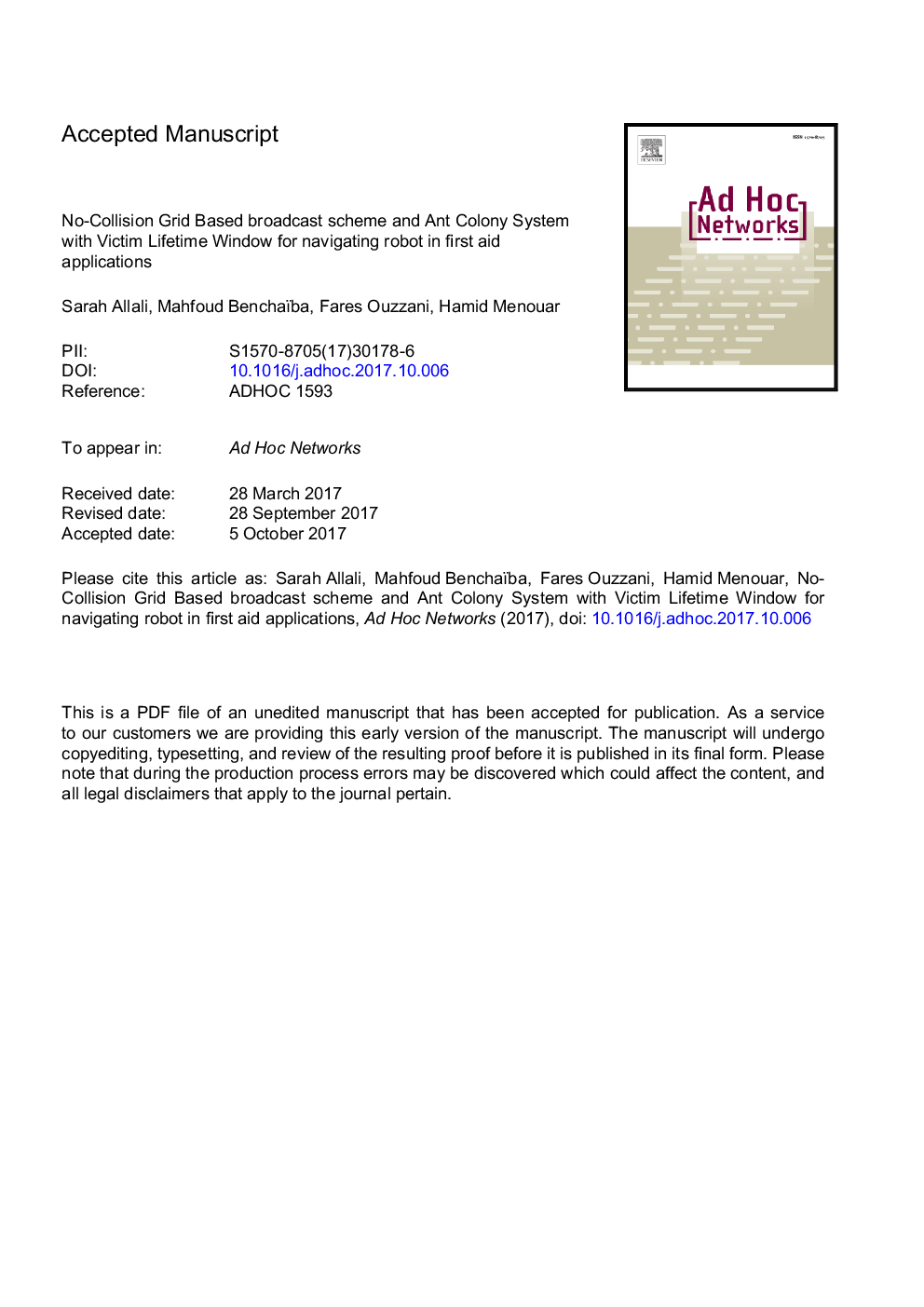| Article ID | Journal | Published Year | Pages | File Type |
|---|---|---|---|---|
| 6878702 | Ad Hoc Networks | 2018 | 30 Pages |
Abstract
The system that we propose in this paper aims to help robots to rescue immobilized victims by providing first aid (e.g.: oxygen masks). Such first aid can increase the chances of saved lives, by maintaining the status of victims until the arrive of rescue team for the take over. The proposed system takes advantage from a grid-based architecture for sites monitoring that has been presented in a previous work. It is composed of a mobile robot and a wireless sensor network (WSN). The robot has the mission of rescuing victims, and the WSN has three main missions: (1) detecting the existence of victims or any anomaly in the area, (2) disseminating reliably information and alerts and finally (3) providing the robot with efficient route guidance. To disseminate information with low cost (i.e avoids collisions caused mainly by the hidden node problem), we propose a distributed algorithm that insures the no collisions in the broadcast scheme using a grid, we called it No-Collision Grid Based (NCCB). Using NCGB allows to create all possible paths from any cell to the victim. This helps in guiding the robot through the safest and shortest route in a distributed manner. In order to increase the number of rescued victims, we used Ant Colony System with Victim Lifetime Window (ACS-VLM) to schedule the sequence of victims to rescue. The proposed solution has been validated through intensive simulations which show an important improvement in terms of overall network overhead, success ratio and the number of rescued victims.
Related Topics
Physical Sciences and Engineering
Computer Science
Computer Networks and Communications
Authors
Sarah Allali, Mahfoud Benchaïba, Fares Ouzzani, Hamid Menouar,
